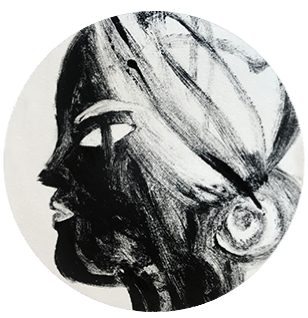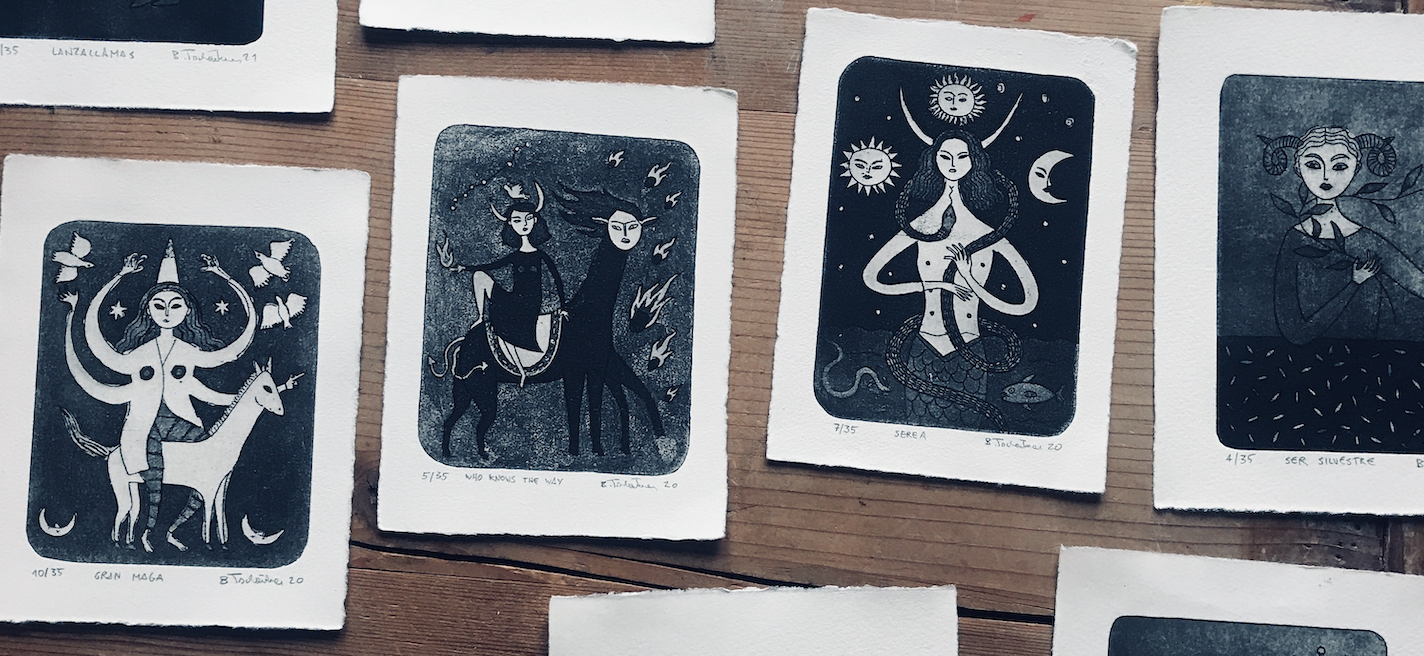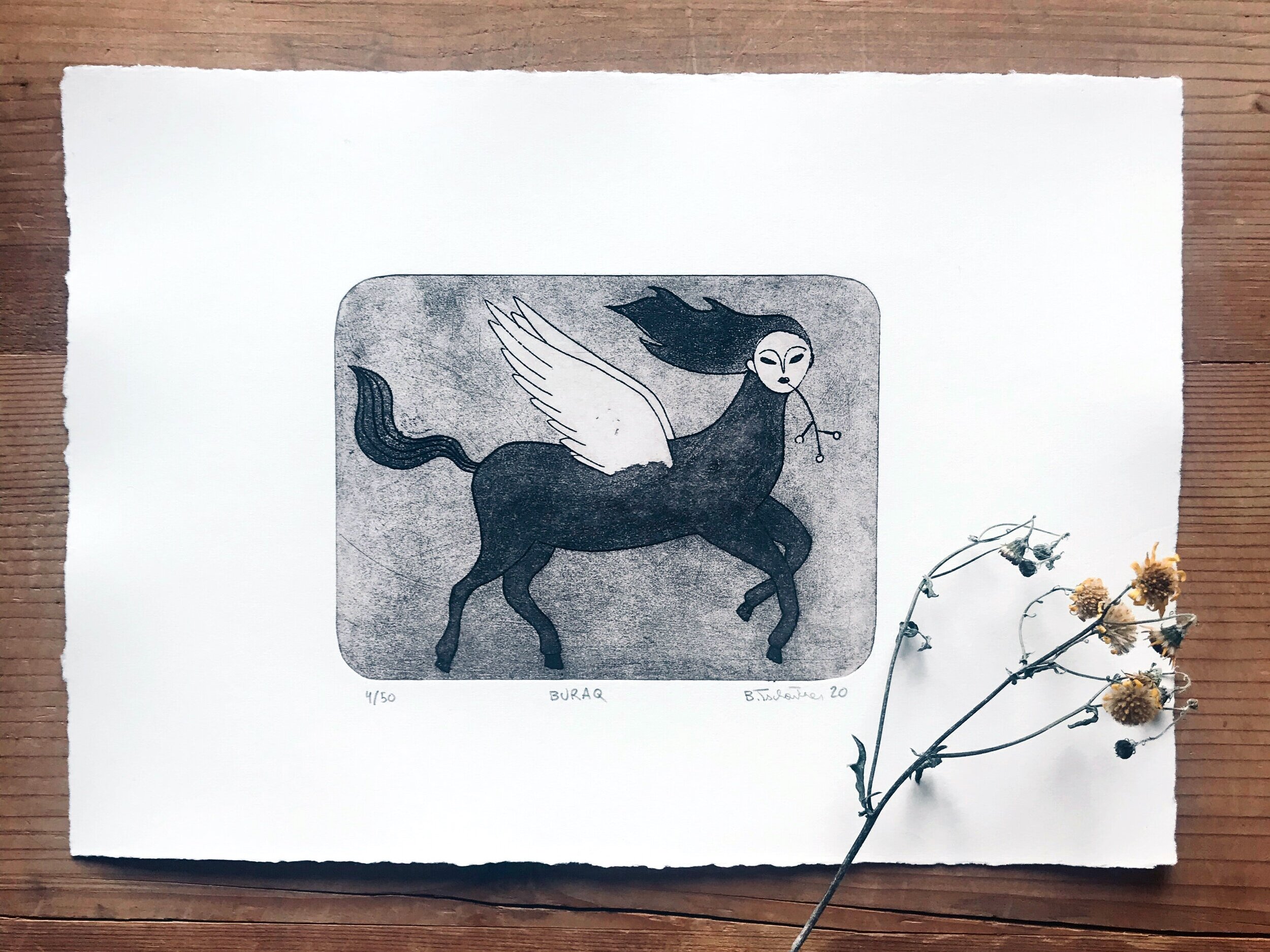Sometimes there are things that come to us, from the outside or the inside, and stay with us for some time – in some cases forever. Thoughts, words, sounds, stories, creatures. They occupy us and our thoughts; they become the horses we ride in our dreams. In my case, it is the winged horse that I have been riding for some time: The Buraq.
I remember where it came from – I saw it on a painted tray in the dining room of a house in Lahore. It was a primitive painting, painted with primary colors – bright red, yellow, green – in the style of Pakistani truck art, which itself is a universe to explore.
There it was, flying in a deep indigo sky spangled with delicate, transparent white stars, each brushstroke a ray of light, there it was, the beautiful Buraq, with its horse body decorated with golden jewelry, with its impossible wings and a dreamy face, flying forever in the square sky on the tray. It was marvelous.
This is how I found the Buraq*, this mystical creature on whose back the prophet Mohamed rode through the skies to the Al Aqsa Mosque** in Jerusalem on what is known as the Night Journey.
I’ve seen the most precious miniature paintings in the galleries of the Lahore Museum, noble women flying kites under the stars in nights long gone, Hindu warriors fighting colorful and intricate wars against spiritual beasts, medieval princesses and princes mesmerized by early fireworks, I’ve seen the archaic smiles of the first Buddhas in Peshawar and in an antique shop in Islamabad I fell for a tiny portrait of Mumtaz Mahal painted on an oval piece of ivory – but the Buraq stood out of all the treasures.
I was so fascinated by it that later I commissioned a Buraq tray for myself in the same workshop, where a group of men painted all sorts of objects with dazzling and narcotic-smelling colors, and when they gave it to me after a week, we all noticed that the painter had given the Buraq my face – which was curious because the painter and I had never met.
So I know where the Buraq came from. But still sometimes I ask myself why it stays with me and makes me paint it over and over. Where does it carry me? As clear as it is that these images want to tell us something, as unclear is the language in which the images are speaking to us, a language which, the more we try to grasp it with the clarity of language, withdraws into the nebulous, the unseizable. But unseizable does not mean incomprehensible.
Still, it’s hard to tell what they want to tell us. Some are too blunt not to be placed, and I also like these. Others reveal themselves in retrospect only, when all falls into place. And sometimes, other people see things in my artworks that I cannot see, because I am too close to them. And sometimes one simply enjoys this wandering wondering, where arrival is not a category, just like it isn’t a category in a dance.
Some things don’t want to be understood; they exist is beyond the duality of question and answer. And so, the Buraq remains part of a family of things that have a meaning not in the sense of something to be understood rationally, but to be felt, like music, which is a language we understand in a way that makes our concept of “understanding” obsolete. There are some things the head doesn’t know, but the heart knows. It’s a meaning that is talking to a part of our being whose beauty lies in its evasiveness and its darkness. It is hard, impossible to capture, and it is not supposed to be captured – just like a winged horse.
The Buraq aquatint etching is available here.
______________________________________________
*Its name is etymologically linked to Arabic barq, meaning “light”, “bright”, or “emitting light” or the Middle Persian barag, “riding beast”.
** Also called the far mosque, about whose spiritual nature Rumi has written a beautiful poem


